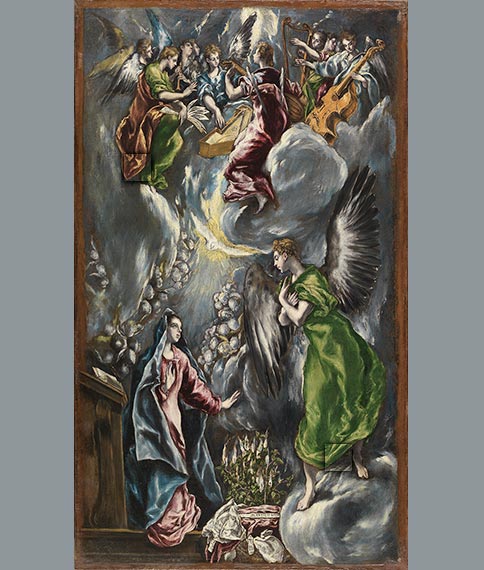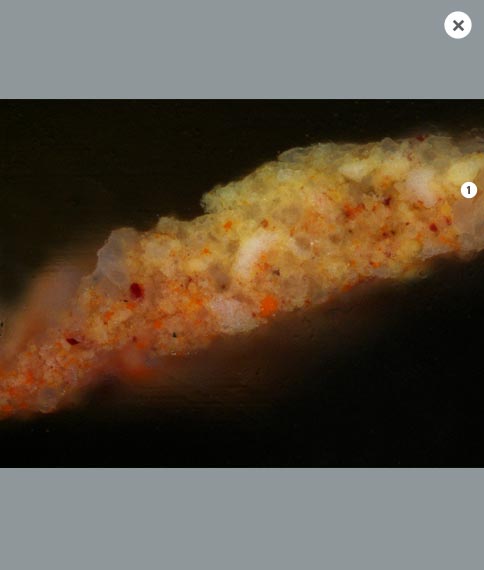MATERIALS ANALYSIS
Click on the specific area to see the details.
Yellow on the cloak of the angel on the left side of the scene
This cross-section only penetrated as far as the top paint layer (1). The microsample clearly reveals one of the defining characteristics of the brushwork in this painting: the richness and precision in the use of varying quantities of different colour pigments, with which El Greco was able to achieve perfectly gauged nuances by blending brushstrokes (in this case he combined white lead, lead-tin yellow type I, minium, carmine lake, yellow ochre and calcium carbonate, with linseed oil as a binder).
Green on the tunic of the angel on the right side of the scene
The cross-section of the microsample taken from the angel’s green tunic shows the layers of the gesso and animal glue ground (1) followed by a layer of brown primer (2) made by blending white lead and earth pigments; we can also make out small fragments of colour pigments carried over from residue on the painter’s palette (azurite, carmine lake, smalt blue, carbon black and minium). The top stratum is the paint layer (3) which in this case was applied as a single coat, blending green and yellow brushstrokes with a varying concentration of copper resinate and lead-tin yellow type I, attenuated with white lead and carbon black granules. The resinous material identified in the copper pigment is colophony resin with a low proportion of linseed oil.



